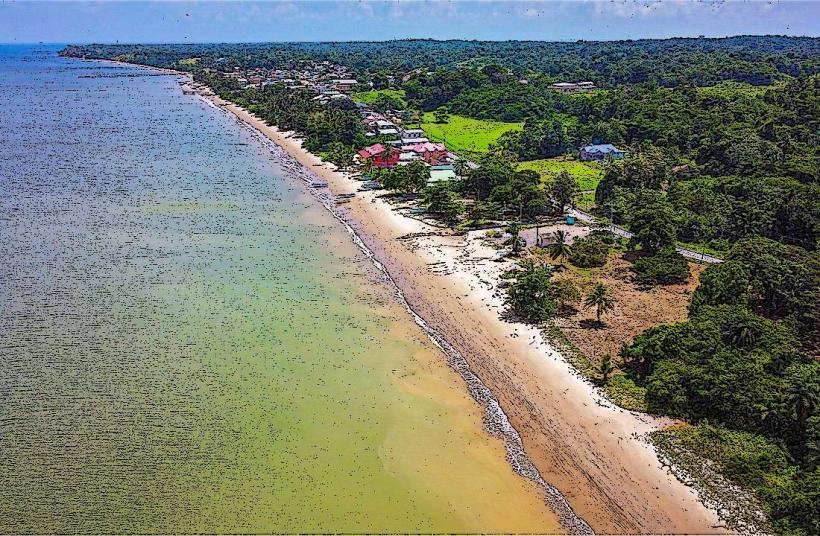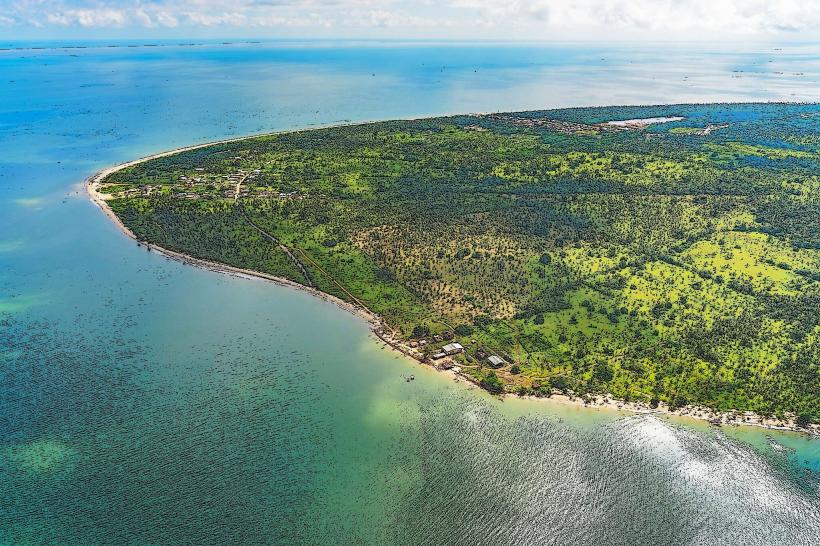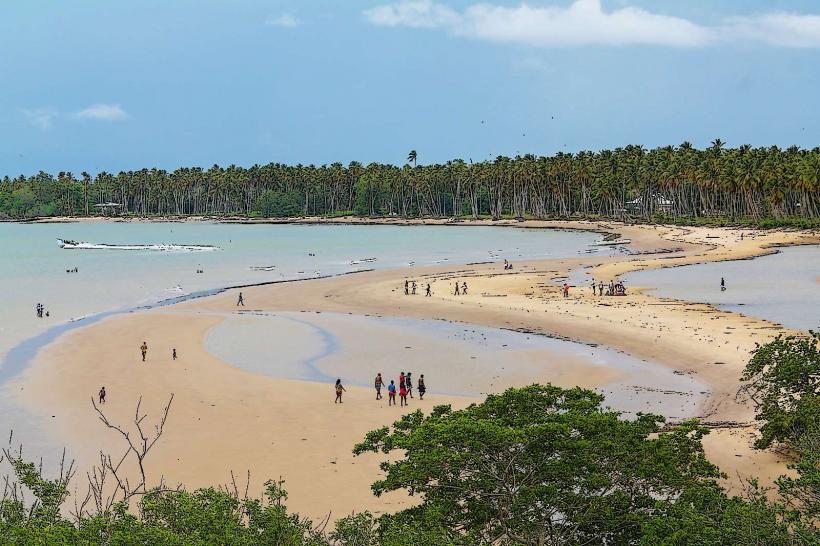Information
Landmark: Cedros MangrovesCity: Cedros
Country: Trinidad and Tobago
Continent: North America
Cedros Mangroves, Cedros, Trinidad and Tobago, North America
Overview
The Cedros Mangroves sit at Trinidad’s far southern tip, just outside the quiet village of Cedros in the Point Fortin Region.Along the island’s southern coast, tangled mangrove roots grip the shoreline, anchoring ecosystems that matter deeply-for the health of the land and the balance of its environment.Mangroves shield the coast from storms, shelter countless species, and keep the water clear and alive with life.First.Like other mangrove forests, the Cedros Mangroves shield the coast from erosion, breaking the force of storm surges and blunting tall, foaming waves before they reach shore.Mangrove roots grip the muddy shore, holding the soil in place and shielding the coast from storms, while the tangled branches and shallow waters teem with life-herons stalking the shallows, crabs scuttling sideways, and schools of fish flashing silver in the sun.In the mangroves, shallow waters rich with nutrients shelter young marine life, from darting fish to tiny, translucent crabs.Mangroves draw migratory birds and other wildlife, turning their tangled roots into a vital refuge for the region’s biodiversity.They also act like natural filters, trapping pollutants, clearing the water, and keeping the nearby coast from turning murky.That’s why the mangroves play such a vital role in keeping local ecosystems thriving.In the Cedros Mangroves, you’ll find stands of red mangrove with their tangled roots in the tide, along with black and white mangroves sheltering a variety of wildlife.Every species has unique traits and clever ways of surviving in the salty, shifting tides.In the waters curling around the mangroves, you might spot darting fish, crabs, and other marine life.Mangroves teem with life, from snappers, groupers, and silvery mullets darting through the roots to crabs and shrimp scuttling in the mud; overhead, waders pick their way along the shallows while migratory birds wheel in from distant shores.You might spot a Great Egret gliding across the shallows, a Reddish Egret stalking fish in knee-deep water, or a Black-crowned Night Heron tucked into the shadow of a mangrove branch.These same mangroves shelter mangrove snails clinging to roots and mudskippers wriggling over slick, wet flats.But like many such habitats worldwide, the Cedros Mangroves are under pressure from coastal development.When towns spread, farms grow, and new roads or buildings go up, mangrove habitats can be wiped out, taking with them the shade, storm protection, and rich breeding grounds they offer.Pollution-especially muddy, chemical-laced water draining from fields-can weaken these coastal forests even further.Chemicals, plastics, and other pollutants can foul the water and endanger the fish and crabs that live there.Meanwhile, rising seas, shifting rainfall, and fiercer storms-fueled by climate change-threaten mangrove forests across the globe.If these trends keep up, the Cedros Mangroves could face the same troubles down the road; for now, teams are working to protect and restore them-along with other mangrove stands across Trinidad and Tobago-planting young shoots where the tide once left bare mud.These projects often raise awareness about why mangroves matter, improve how coasts are managed, and replant trees in places where roots once tangled through the mud but have since vanished.Local communities are at the heart of this work.In southern Trinidad, from quiet fishing villages to the shores near Cedros, neighbors work to protect the mangroves through school workshops and careful, sustainable use of the land.When local communities take part in conservation projects, the work tends to last and actually make a difference.If you visit the Cedros Mangroves, you’ll find quiet trails where herons stalk the shallows-perfect for eco-tourists, birdwatchers, and anyone with a camera in hand.In this quiet stretch of coast, you can watch herons glide over the water or spot crabs scuttling along the shore.If you want to get even closer to the mangroves, paddle a kayak or steer a small boat through the winding coastal channels.Gliding a kayak through the still mangrove channels lets visitors spot herons fishing in the shallows and soak in the area’s quiet beauty, while local guides in Cedros lead tours that share stories about the region’s ecology, plants, and wildlife.If you’re curious about why mangroves matter and how people are working to protect them, these tours are a perfect fit.The best time to explore the Cedros Mangroves is in the dry season, January through May, when the air feels warm, the skies stay bright, and you can kayak, walk shaded trails, or watch herons glide over the water.From June to December, heavier rains and rising water can make some areas harder to reach.Even so, you can still wander through the mangroves, where the air smells faintly of salt and the leaves glow a deep green, offering a different kind of beauty.The Cedros Mangroves remain a vital part of Trinidad’s coast, shielding the shoreline, sheltering countless species, and keeping the surrounding waters clean.If you love nature, these mangroves invite you to step into calm, untouched waters where herons glide overhead and hidden wildlife waits to be found.Protecting the Cedros Mangroves is vital, so their rare ecosystems survive for generations to come-letting children one day hear the rustle of leaves in the warm sea breeze and share in the wealth of life they hold.





